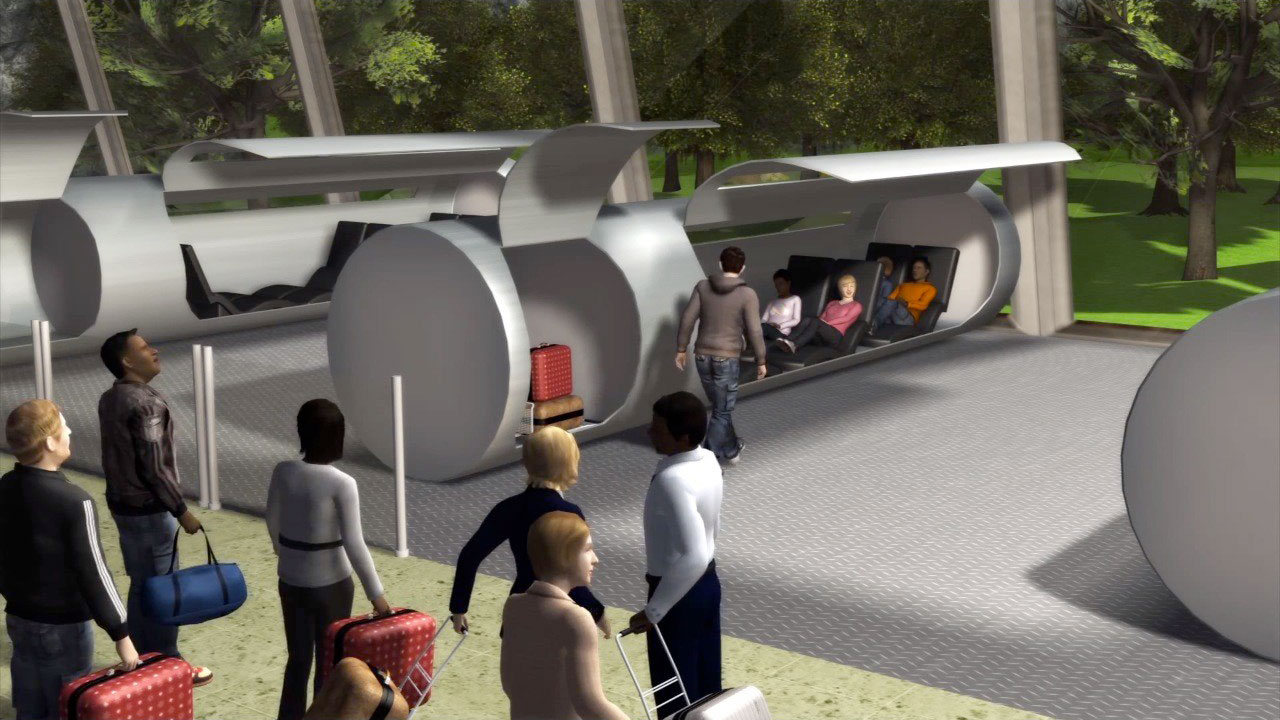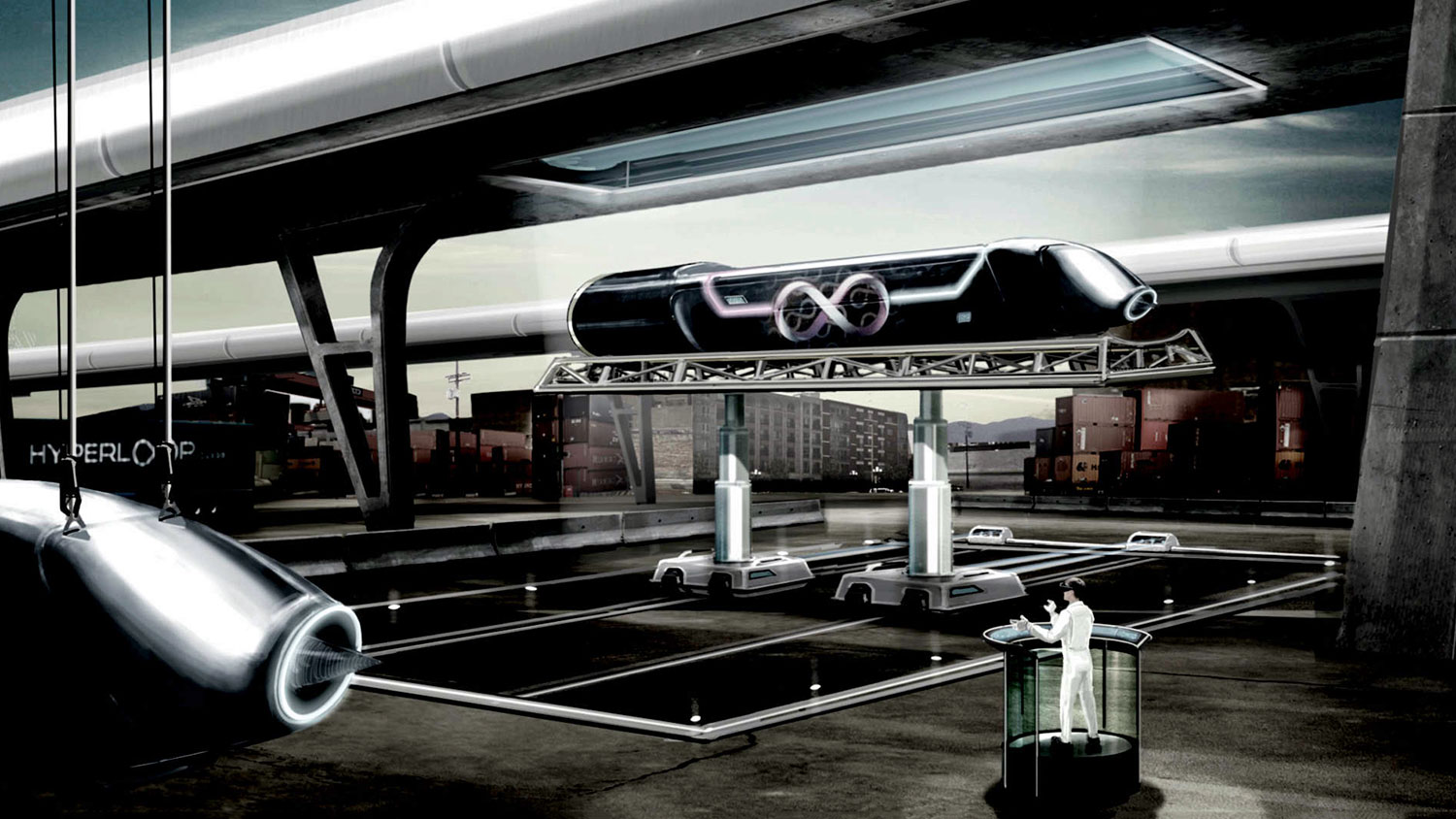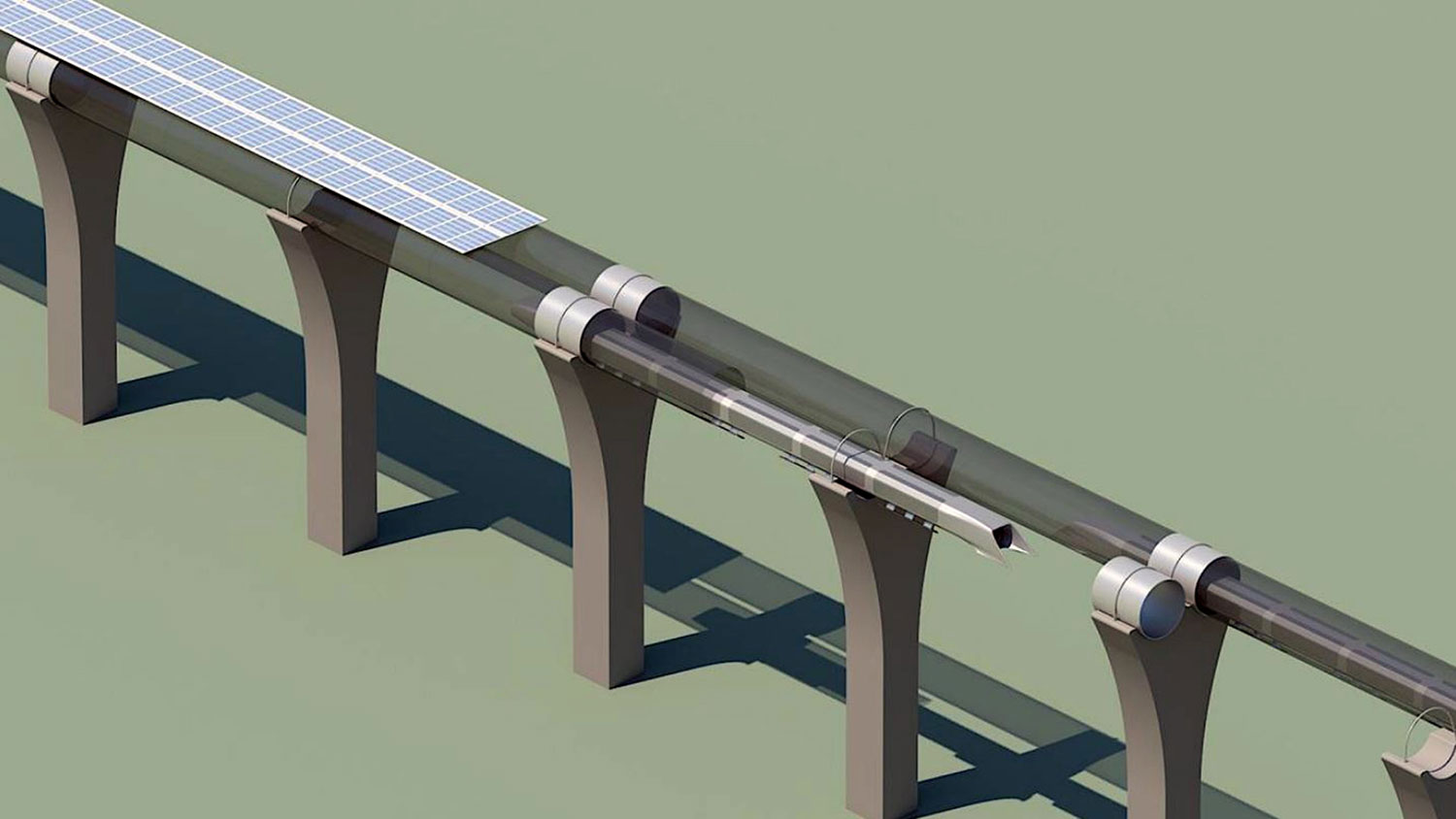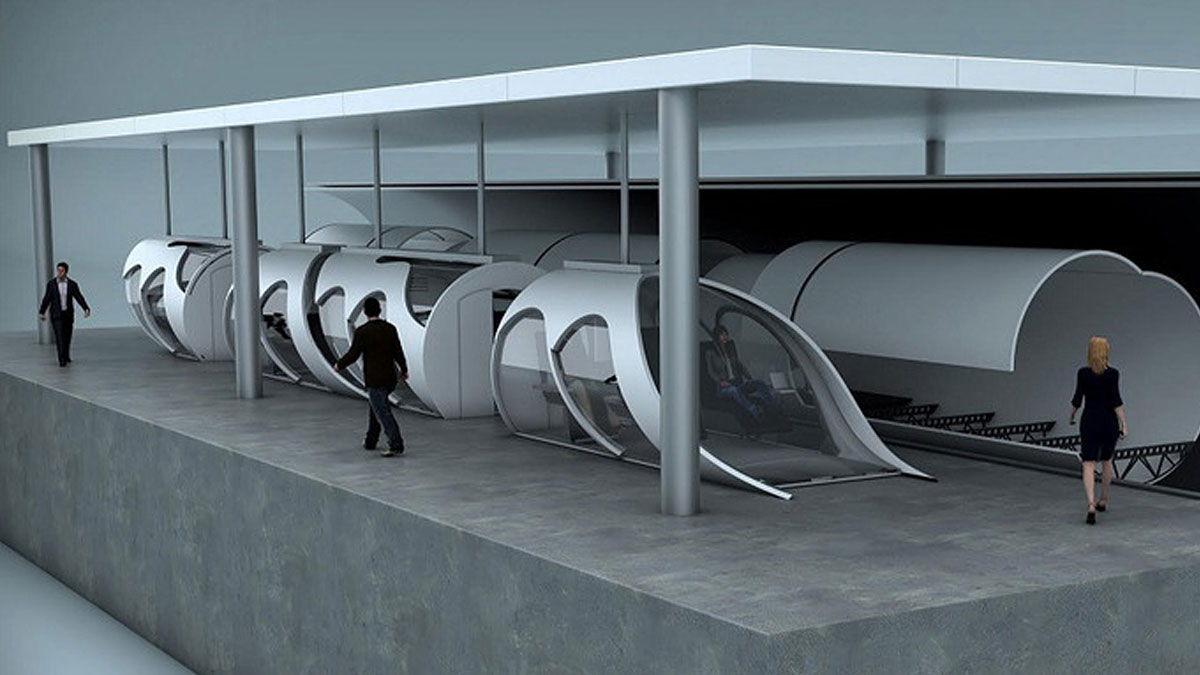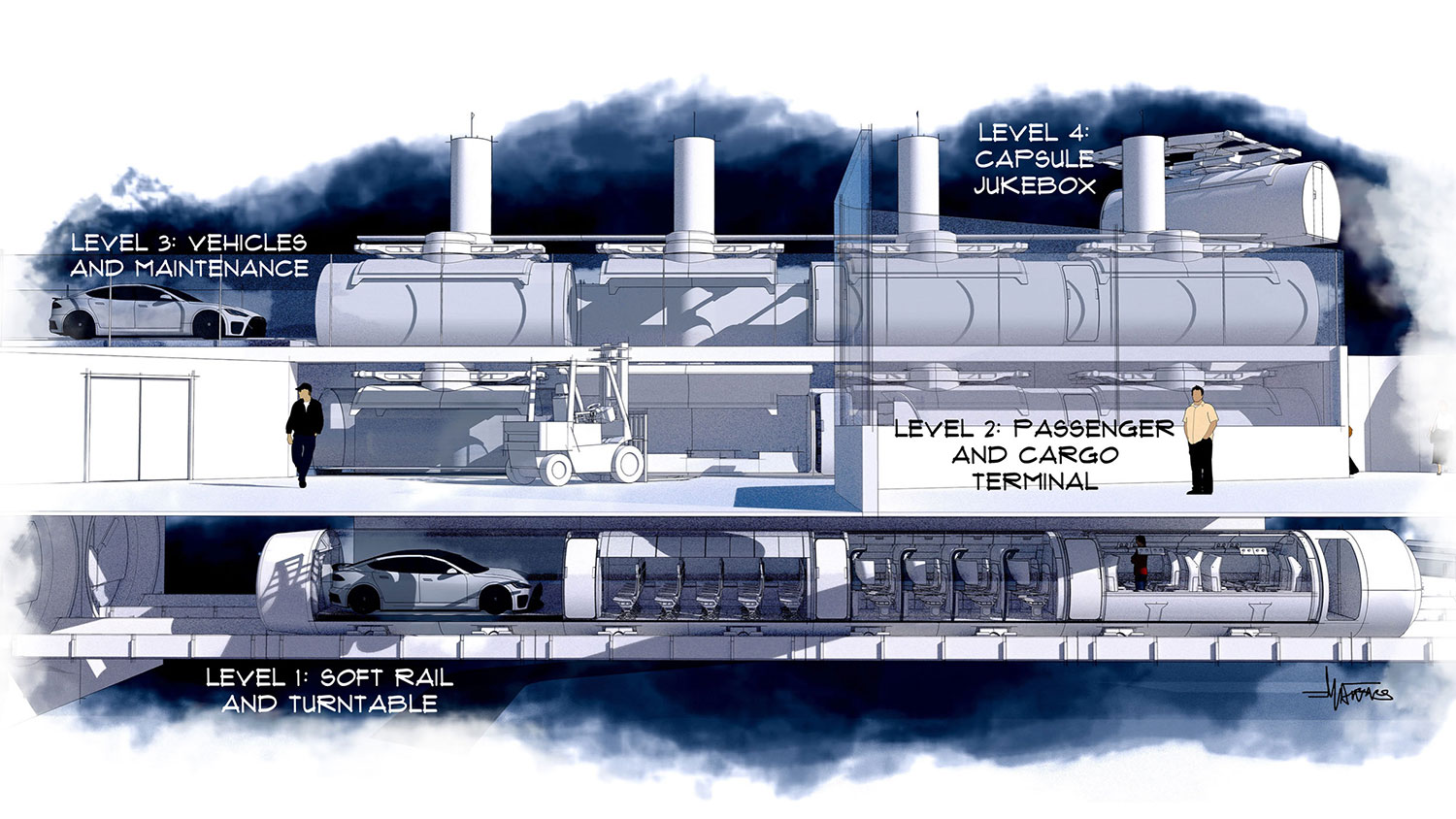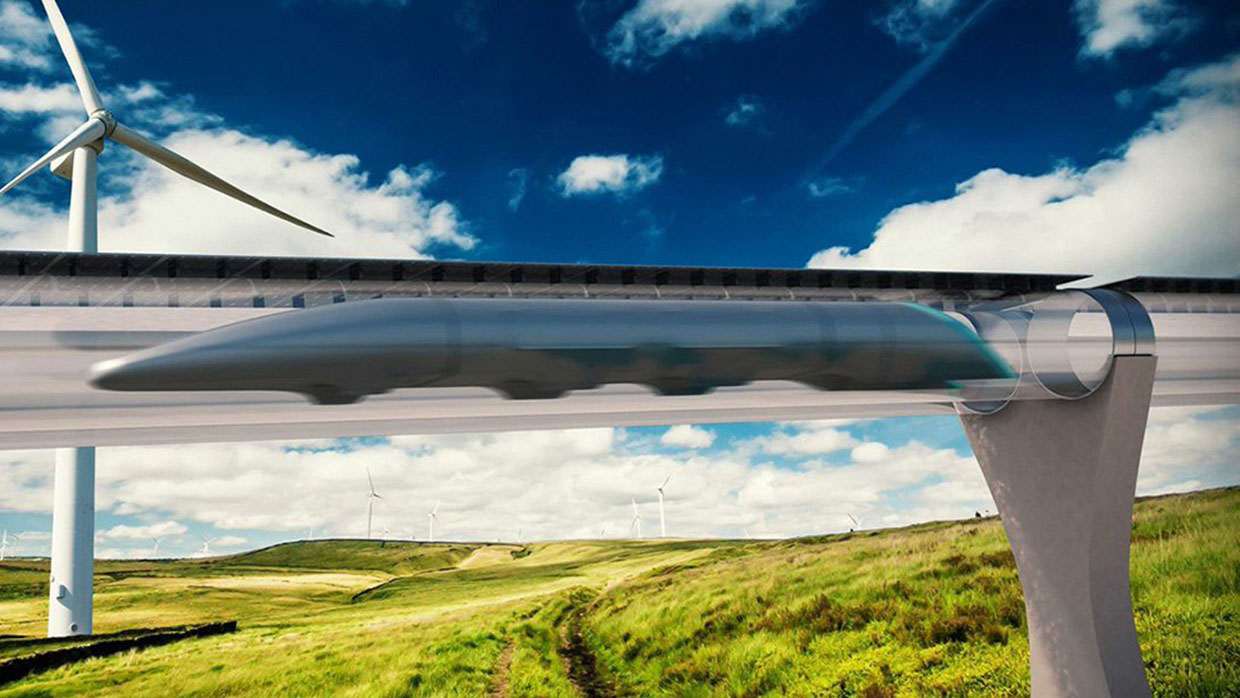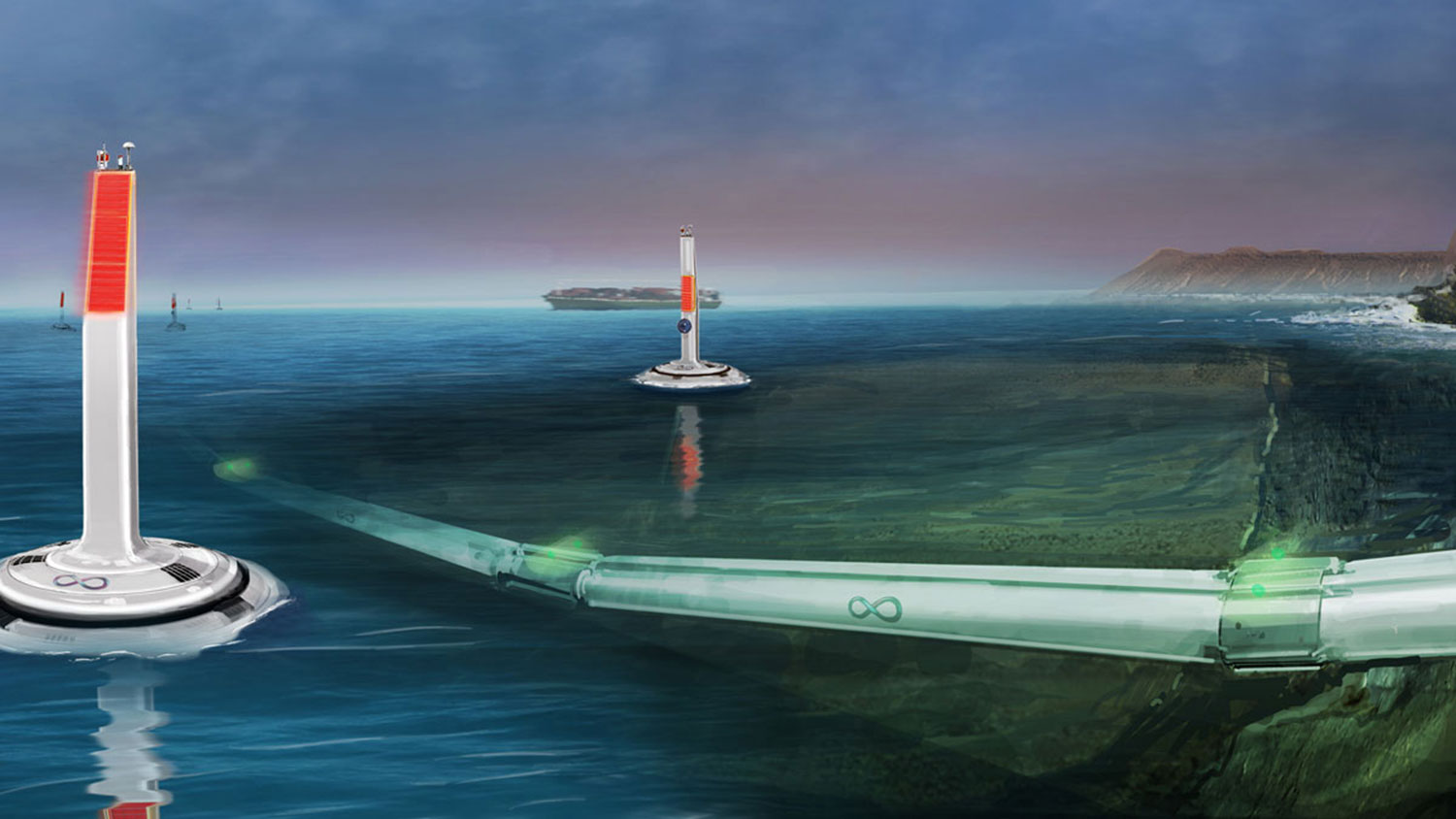We live in an age of unbelievable technological progress. To a visitor from the distant past, this would surely seem like a utopian age. Yet in many areas of life, things don’t seem to have changed all that much, and transportation is a woeful example of this. The roads are still lined with cars, the skies streaked with airliners. 20th century science fiction foresaw flying cars and teleporters; the 21st century settled for Segways.
Dreams never die, however, and the fantasy of futuristic transportation is very much alive right now as exemplified by a concept called the Hyperloop. While it’s not as mind-shattering as a teleporter or as fun as a personal jetpack, the Hyperloop could revolutionize mass transit, shortening travel times on land and reducing environmental damage in the process.
What is the Hyperloop?
The Hyperloop concept as it is widely known was proposed by billionaire industrialist Elon Musk, CEO of the aerospace firm SpaceX and the guy behind Tesla (as well as, in the last year, a number of public gaffes). It’s a reaction to the California High-Speed Rail System currently under development, a bullet train Musk feels is lackluster (and which, it is alleged, will be one of the most expensive and slow-moving in the world).
A one way trip between San Francisco and Los Angeles on the Hyperloop could take about 35 minutes.
Musk’s Hyperloop consists of two massive tubes extending from San Francisco to Los Angeles. Pods carrying passengers would travel through the tubes at speeds topping out over 700 mph. Imagine the pneumatic tubes people in The Jetsons use to move around buildings, but on a much bigger scale. For propulsion, magnetic accelerators will be planted along the length of the tube, propelling the pods forward. The tubes would house a low pressure environment, surrounding the pod with a cushion of air that permits the pod to move safely at such high speeds, like a puck gliding over an air hockey table.
Given the tight quarters in the tube, pressure buildup in front of the pod could be a problem. The tube needs a system to keep air from building up in this way. Musk’s design recommends an air compressor on the front of the pod that will move air from the front to the tail, keeping it aloft and preventing pressure building up due to air displacement. A one way trip on the Hyperloop is projected to take about 35 minutes (for comparison, traveling the same distance by car takes roughly six hours).
Why the need?
Conventional means of transportation (road, water, air, and rail) tend to be some mix of expensive, slow, and environmentally harmful. Road travel is particularly problematic, given carbon emissions and the fluctuating price of oil. As the environmental dangers of energy consumption continue to worsen, mass transit will be crucial in the years to come.
Rail travel is relatively energy efficient and offers the most environmentally friendly option, but is too slow and expensive to be massively adopted. At distances less than 900 miles, supersonic travel is unfeasible, as most of the journey would be spent ascending and descending (the slowest parts of a flight.) Given these issues, the Hyperloop aims to make a cost-effective, high speed transportation system for use at moderate distances. As an example of the right type of distance, Musk uses the route from San Francisco to L.A. (a route the high-speed rail system will also cover). The Hyperloop tubes would have solar panels installed on the roof, allowing for a clean and self-powering system.

There are of course drawbacks. Most notably, moving through a tube at such high speeds precludes large turns or changes in elevation. As a result, the system is optimal for straightforward trips across relatively level terrain.
California is, of course, susceptible to earthquakes, and the Hyperloop design takes this into account. The tubes would be mounted on a series of pylons spread along the route, each pylon placed every 100 feet or so. The pylons will allow for slip due to thermal expansion and earthquakes, ensuring that the tubes will not be broken by any such movement.
Realistically, the most important problem in getting any project off the ground is money, doubly so when talking about a public work. Even if one can produce an impressive blueprint, there are still issues of public approval, legislation, regulations, and contractors to worry about. Fortunately, The Hyperloop would be a cost-saving measure, especially when measured against the corpulent rail project currently underway. Musk’s white paper for the Hyperloop estimates the total cost could be kept under six billion dollars. Meanwhile, phase one of the California high-speed rail project is expected to cost at least $68 billion.
The Hyperloop competition and recent developments
Although Elon Musk postulated the idea, SpaceX is not developing a commercial Hyperloop of its own. Instead, it has held various competitions to encourage students and engineers to develop prototype pods. To facilitate this, SpaceX built a one mile test track in California.
The contest was a way for engineers and companies to get the ball rolling to make the Hyperloop system a reality.
On January 30, 2016, the SpaceX Hyperloop design competition concluded. More than 100 prototype pod designs were submitted, and 27 teams have won the chance to test their designs on the SpaceX Hyperloop test track in June 2016. A team of grad students from the Massachusetts Institute of Technology (MIT) won Best Overall Design. According to the MIT team, the pod is lightweight and emphasizes speed and safety, including a fail-safe brake system. Whereas many Hyperloop designs use air jets to levitate, the MIT design uses two arrays of neodymium magnets to keep the pod aloft. Additional magnets inside the pod keep it stable as it races along the track. The power of the prototype was impressive, though it’s still very far from a commercial product given it currently lacks space for passengers or even cargo.
In January 2017, the long-running SpaceX Hyperloop competition wrapped up with “Competition Weekend I,” in which completed pods raced on the test track. A team from Delft University in the Netherlands took the top prize.
We are very proud be the overall winner of the first hyperloop pod competition ever! Thanks everyone for the great support! pic.twitter.com/BKl5bI5iNX
— Delft Hyperloop (@DelftHyperloop) January 30, 2017
Although this particular contest is over, the Hyperloop project is far from finished, as companies and governments around the world explore the concept. For its part, SpaceX will be holding another competition from August 25-27. In HyperLoop Pod Competition II, contestants will strive to attain the highest maximum speed. SpaceX has published the list of entrants, which includes some of the teams from the first contest.
The unveiling of the Quintero One

On October, 2018, HTT showed off its first passenger capsule, dubbed Quintero One. The capsule is 105-feet long, the Quintero One weighs five tons, and is made from two layers of a material HTT calls “vibranium.” Although HTT’s vibranium isn’t a product of Wakanda, it is the “safest material on earth,” according to co-founder and CEO Dirk Ahlborn, who goes on to say that vibranium, which is a carbon fiber material lined with sensors, can “actually sense integrity” and “monitors impact.” HTT’s capsule consist of two layers of vibranium, so even if the first layer suffers damage, the capsule can survive until it reaches safety.
Bibop Gresta, chairman of HTT, says that the capsule “will be fully optimized and ready for passengers” in 2019. Gresta also emphasizes that HTT has “taken major steps in solving government regulations with our safety certification guidelines and insurance frameworks,” which suggests that the company may be close to getting a legitimate, accessible Hyperloop to consumers.
There’s no guarantee that anything concrete will come out of these competitions, though. They are a way for engineers and companies to exchange knowledge and maybe get the ball rolling to make the Hyperloop system a reality at some point down the line. Like a world’s fair expo, it’s a place for visions of the future to become a little bit clearer.
Developments abroad
While SpaceX’s contest was a good showcase for engineering students, the Hyperloop concept has also garnered interest from businessmen. Startups such as Hyperloop One (formerly Hyperloop Technologies) and Hyperloop Transportation Technologies (HTT) are working on Hyperloop systems of their own, and what they lack in clever naming they make up for in ambition. Both companies are building their own test tracks, and a few years ago, HTT announced partnerships with Oerlikon Leybold Vacuum, an engineering firm specializing in vacuum technology, and Aecom, an international corporation providing technical project support. The companies will receive stock options in exchange for their involvement.
HTT’s partnership with Oerlikon and Aecom was a massive development. International, publicly traded companies have deemed the Hyperloop concept solid enough to invest in. They also bring with them much-needed experience: Oerlikon has been a leader in vacuum technology since the dawn of the 20th century, while Aecom has been involved in many high profile engineering projects such as the Cape Town Stadium. This partnership represents a tremendous vote of confidence in the Hyperloop, and brings much needed legitimacy to a project that had been, until recently, a pipe dream.
January 2016 proved to be a big month for Hyperloop progress. HTT applied for a permit to begin construction on a test track along the I-5 freeway in Quay Valley, California. Meanwhile, Elon Musk’s SpaceX, progenitor of the Hyperloop idea, partnered with Aecom to build its own test track in Hawthorne, California. With three test tracks currently in development, the Golden State is at the forefront of Hyperloop development.
In March 2016, HTT announced its intention to build a network of Hyperloop tracks connecting Vienna, Bratislava, and Budapest, with Slovakia serving as a hub between the three.
In May 2016, Hyperloop One showed off its prototype system at a test track in Las Vegas.
At an April 2017 conference called “Vision for America,” Hyperloop One revealed several proposed tracks that it could build across the United States. The proposed routes include a track uniting Dallas, Houston, and Laredo — and stops in between — with a total transit time of roughly an hour or less. Throughout the proposals, the company laid out economic benefits — a route from Chicago to Pittsburgh could create an “economic megaregion” — and environmental ones; Hyperloop One noted that a proposed track from Orlando to Miami could avoid the Everglades.
It is a detailed presentation, offering a look at the many factors these startups are taking into account.
It remains unclear whether commercial Hyperloop systems will ever be widely adopted. As the global population swells and the environment declines, however, better mass transit systems will become essential. Leonard Bernstein once claimed that great endeavors require two things: “a plan, and not quite enough time.” The plan for the Hyperloop is there, but how much time do we have?


